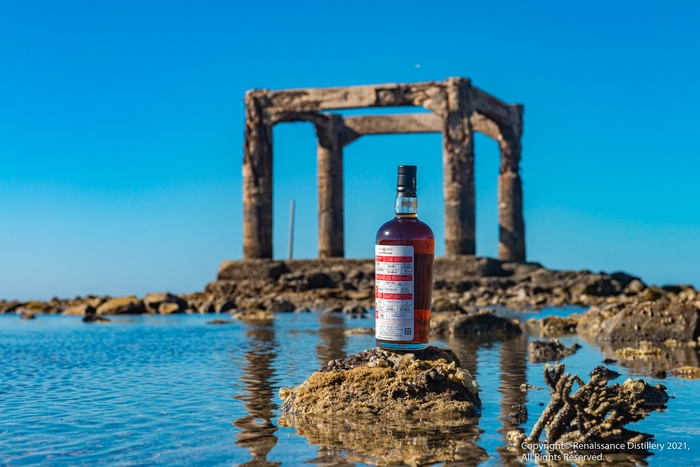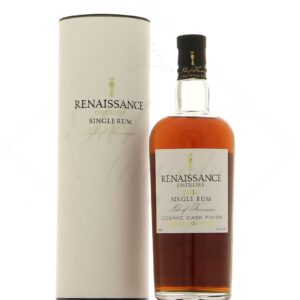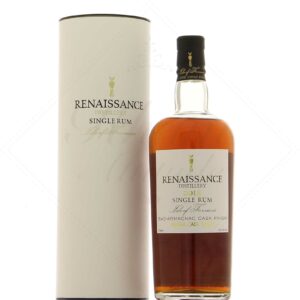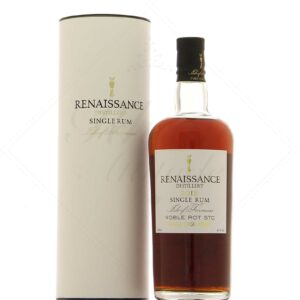
We were eagerly awaiting them; the first vintages of the Renaissance distillery have arrived on Rhum Attitude! Taiwan is now an island to be reckoned with. The rums produced by Olivier Caen and Linya Chiou are among these demanding expressions, for which every detail is the subject of both technical and philosophical choices. The Franco-Taiwanese couple is eminently passionate about wines and spirits. It is with a rich cultural background and extensive knowledge of the world of alcohols that they design their rums in such a personal way.
Long fermentations, distillation in traditional pot stills and aging in high-quality oak barrels are the foundations of their work, but you will learn a lot more about the production of spirits by tasting their rums and studying their labels, which are real treasure troves of information. Concentration and harmony are the key concepts of the Renaissance Distillery , and you will discover rums of impressive maturity and complexity.
Let's hear from Olivier Caen, distiller and cellar master, who tells us how the choice of barrels to be presented for the first time in France was made:
"We preferred to select casks in a register of "personality, power and sensitivity" while remaining faithful to our credo of "uncompromising rums". These are literally diplomatic rums. Linya will also provide bottles to Taiwanese diplomats stationed in Paris. The ex-casks of great French spirits go well with the rum. These Single Casks have a "contained ardor". These rums require time to expand in the glass as well as in the mouth. The rum must be well aerated so that it can develop and express itself. Our rums often require a lot of time and aeration when tasting.
The Single Casks 18035 and 18102 are both made on a base of new Limousin oak, then repotted in Bas Armagnac and then first-fill Cognac casks. I really like the elegance of Limousin which goes naturally with rum . »
Single Cask 18102 Cognac Finish (former winemaker and historic supplier to La maison Hennessy for a century)
"These are 2 barrels of the same capacity made of Limousin oak (new and ex-cognac) which both come from the Tonnellerie de Jarnac. The 2 barrels were made at the Tonnellerie de Jarnac, so they are like 2 brothers from the same family with one and the same mother: the cooperage of Jarnac. It is this kind of small detail that I like in the design. There is natural DNA in these woods which turns into a real family story. The father is Taiwanese rum, what could be more normal than to assemble a great piece of history of France and its centuries-old oaks, with the very young history of Taiwanese rum.
The rum is elegant and powerful at the same time.
Single Cask 18035 Bas-Armagnac Finish
“New Limousin oak barrel from the Jarnac cooperage then re-potted in a first-fill Bas Armagnac barrel.
Linya and I select the best barrels, especially from Bas-Armagnac, which is also the best terroir (we are both Armagnac musketeers). In Armagnac, they say that the forest used to make the barrels must look at the vine. It's an idea that I like, especially since when putting the Armagnac into barrels, it is very rarely reduced, as here at the distillery. The result of new Limousin + Bas Armagnac gives a very subtle rum where the impact of the barrel, in filigree, naturally finds its place. There is a beautiful complicity between the rum distillate and its barrels.
Single Cask 18089 STC ex-old cask having housed wines from French Botrytis Cinerea for over 13 years – Full Maturation
“Origin of the Barrel: French cooper.
The STC process (removing a layer of wood containing the wine, gentle heating to get to the heart of the wood, followed by a medium burn) helps to counterbalance the extreme and sweet side of the “Noble Rot”. Less wine and a little new wood, it's all about balance in this expression.
I particularly like the Limousin barrels because they reflect the best that France can produce: a combination of luxury and refinement, but with discretion. Like Taiwan, these three rums are mineral, complex while being accessible.
Transparency as a vector of passion
Let's take the example of the back label of barrel no. 18035. Let's take the opportunity to decipher a few concepts and appreciate the attention to detail given to each vintage.
These are molasses from the island of Taiwan that were used, and fermented for 20 days in 300-liter vats using oenological yeasts and with the use of vinasses. Vinasses ("dunder") allow in particular to acidify the fermentation in order to obtain a large number of aromatic elements.
On the distillation side, we learn that the first pass lasted 7 hours, and the second 13 hours. We also read that the cut made is called "Middle Third". This means that it is a rather classic cut, where the rum was collected from 75% alcohol, and the collection stopped when it flowed from the still at 55%. This 1200 liter Charentais still is heated over an open fire, and the condensation is carried out using a coil.
We can see that the rum was put into a “pot still strength” barrel, that is to say without reduction, directly after distillation.
The first part of the aging was carried out in new 350-liter Limousin barrels. Then after 3 years, the rum was reracked and the maturation was completed in 400-liter Bas Armagnac barrels. This took place in the tropical climate of Taiwan.
The day after its unloading, the rum was bottled at cask strength , in a quantity of 483.
All this information tells us a lot about the work at the distillery and the cellar. The time between operations and the technical choices made are all aspects that the rum lover can explore in more depth. These are concepts that he can research and compare the effects of one tasting to another. This generosity in transparency is not only a guarantee of quality. It is also a chance for rum lovers to better understand its production and to educate themselves on the subject.
Now it’s time for the tasting! The notes of these 3 vintages will be available very soon on the site.


